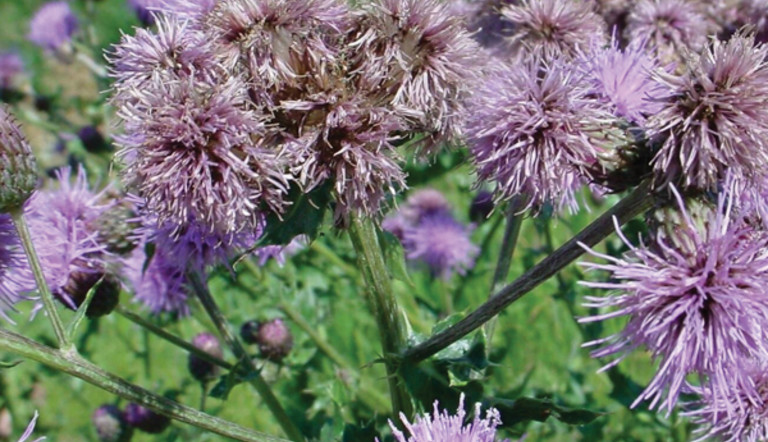
Control Dandelions Post-Harvest

The Problem with Perennial Weeds
Weeds are a nuisance whether they’re annual or perennial, but perennial types can be especially hard to manage thanks to a few key characteristics:
Seeds
Dandelions, one of the most familiar perennial weeds out there, don’t require pollination to produce seeds. Just one plant can produce up to 2,000 seeds, which can spread quickly and efficiently via the wind. In fact, it’s estimated that a dense stand of dandelions can produce more than 240 million seeds per acre.
When it comes to other perennial weeds like Canada thistle, some require both male and female plants for seed production. Canada thistle can produce around 45 seeds per flower, which are usually dispersed by the wind.
Taproots
Both dandelions and Canada thistle have very long taproots that make it extremely difficult to remove them manually. In fact, unsuccessful removal of the taproot can result in a stronger plant, as removal of the foliage can encourage the plant to focus instead on root growth. This is bad news, as some dandelion taproots can reach up to two metres in length. In the case of Canada thistle, the plant is able to reproduce from old roots left in the ground, which send out new roots to create new plants.
Overwintering
Dandelion and Canada thistle are able to survive harsh winter conditions thanks in part to their long taproot, where they store essential nutrients they’ll need to get through the winter. This also allows them to pop up in the spring before many other plants, making them tough competitors for your cops at the start of the growing season. Thus, the timing of your post-harvest weed control application is crucial to ensure perennial weeds won’t be a problem come spring.
Why Spray in Fall?
There are three major benefits to using post-harvest weed control in the fall to combat perennial weeds.
Reason #1: Nutrient Flow
In autumn, falling temperatures signal to dandelions and other perennial weeds that it’s time to start moving nutrients to tissues below the soil’s surface so they can be stored over the winter and used for growth in the spring. Spraying during this increased period of nutrient flow means that any control product applied will also be moved more quickly and efficiently throughout the plant, especially down into the roots, which will be more effective at killing the plant and preventing any regrowth.
Reason #2: Warmer Soil in Spring
Killing off perennial weeds post-harvest leaves less dead weed residue on fields, allowing for warmer soil temperatures and the ability to get out onto the fields earlier for spring seeding. Post-harvest weed control also helps dry out the soil, as any residue that would normally trap moisture will have been removed.
Reason #3: More Time Post-Harvest
Another benefit to controlling weeds post-harvest vs. pre-seed is that it allows for problem-solving during a less busy time in the season. Rather than wait to deal with perennial weeds in the spring, when there is an abundance of tasks to complete fairly soon after the snow melts, taking the time to spray in the fall means peace of mind knowing you have a head-start on next year’s growing season. Just be sure to leave enough time between harvesting and spraying, and follow instructions on any product labels.
For more information on fighting weeds in the fall and the options available to you, check out our eBook.